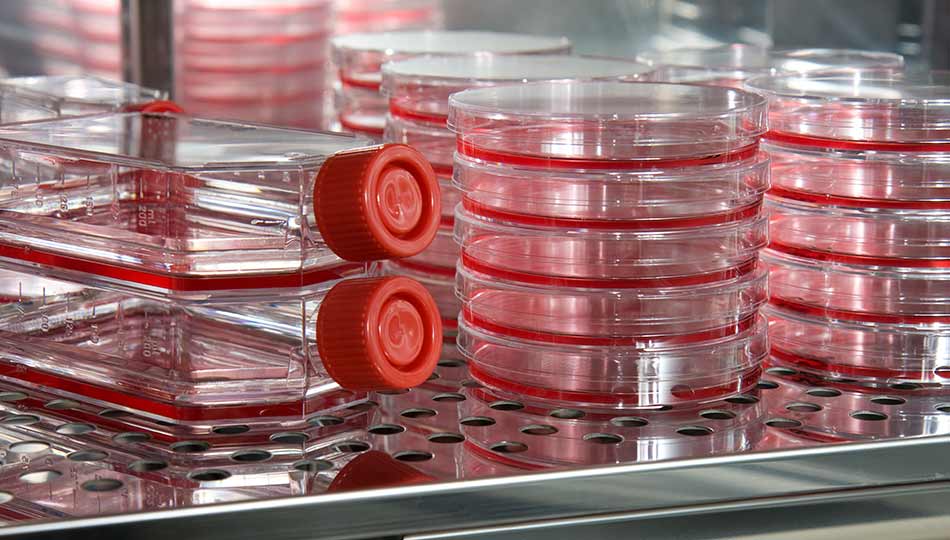Endocrine disruptors and our health
Endocrine disruptors may be causing serious health effects such as infertility, cancer and development disorders for example birth defects. But where are they used and what is being done to protect us?

The endocrine system is a complex network of communication between the nervous system and key bodily functions such as reproduction, immunity, metabolism and behaviour.
Studies suggest that some chemicals that interfere with our hormonal systems can negatively affect our metabolism, growth, sleep and even our mood. These chemicals – known as endocrine disruptors – are mostly man-made and are found in materials such as pesticides, metals, additives or as contaminants in food and cosmetics.
Negative health effects that may be caused by endocrine disruptors include declining sperm counts and testicular cancer in men, effects in the neurological and immune systems, and increased numbers of male children born with genital malformations. In fact, a large proportion of young men – up to 40 % in some countries – have been found to have low semen quality, which reduces their ability to father children.
Recent research has also shown that endocrine disruptors can affect the systems that control body fat development and weight gain. In addition, increased rates of neurobehavioural disorders such as dyslexia, mental retardation, autism and ADHD have been linked to exposure to endocrine disruptors.
We may be exposed to endocrine disruptors through food, dust, water and by inhaling gases and particles in the air, or simply through skin contact, for example when applying personal care products.
Sometimes, the effects caused by an endocrine-disrupting substance are only seen long after exposure has taken place. For example, exposure of foetuses to such a substance may cause negative health effects when they reach adulthood. These effects could also be inherited by future generations.
You may find substances that are suspected of being endocrine disruptors in everyday products such as plastic bottles, toys, food containers made of metal, electronic devices, cosmetics, pesticides and detergents.
The views presented in the video do not necessarily represent the official position of the European Chemicals Agency.
The video interview is from the ‘People and perspectives’ section of ECHA’s newsletter issue February 2018
What is the EU doing about it?
The EU is taking action on many different levels, from research to regulation, and is actively identifying endocrine disruptors. A growing number of chemicals are being identified as substances of very high concern (SVHCs) due to their endocrine-disrupting properties.
One such chemical is bisphenol A (BPA). BPA is on the Candidate List of substances for authorisation under the REACH Regulation because it is toxic to reproduction and because of its endocrine-disrupting properties. Already before BPA was formally identified as a substance of very high concern because of its endocrine disrupting properties, it was decided to ban it in thermal paper, in which it is used as a dye developer. It can be found in sales receipts from shops and public transport and parking tickets. The ban takes effect in 2020 to give companies time to phase out the use of BPA and find safer alternatives.
BPA has also been banned from infant feeding bottles across the EU since 1 June 2011. In the EU, BPA can be used in materials that are in contact with food, but there is a maximum amount that is allowed to leach out of the material. In addition, some Member States have imposed further restrictions on products containing BPA.
Phthalates are chemicals often used to increase and maintain the flexibility of vinyl plastics. DEHP, DBP, DIBP and BBP are four phthalates that have been added to the Candidate List of SVHCs because of their endocrine-disrupting properties. Restrictions are in place or in the making for these and other phthalates.
The EU is constantly working to identify hazardous chemicals including endocrine disruptors and to make sure that they are replaced with safer alternatives. The criteria for identifying chemicals with endocrine disrupting properties in biocidal products has been agreed at EU level. The criteria apply from June 2018.
Follow the links below to find out more about examples of substances that are identified as endocrine disruptors:
Read more
- What are endocrine disruptors? - European Commission
- Endocrine Disrupting Chemicals (EDCs) - World Health Organization
- Endocrine Disrupting Chemicals 2012 - World Health Organization
- Endocrine Disrupting Chemicals - OECD
Previous Next Layout
Read Also
-
 Products
ProductsChemicals in plastic products
Plastic makes our lives easier in many ways, but some plastic products contain chemicals that can harm our health – such as bisphenol A or some phthalates.
READ MORE -
 general
generalCombined effects of chemicals
Chemicals are all around us but what happens to our health or the environment when the effects of individual substances are combined?
READ MORE
